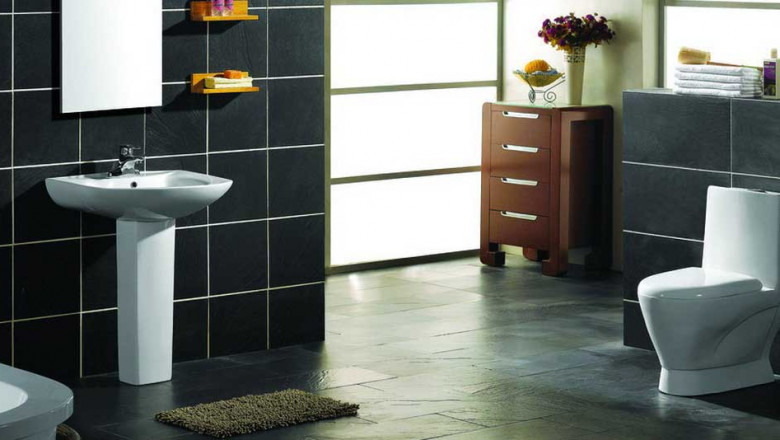views
The Sanitary Ware Market in the Asia-Pacific region is experiencing unprecedented growth, driven by rapid urbanization, increasing disposable incomes, improved sanitation awareness, and massive infrastructure development. With countries like China, India, Japan, and Southeast Asian nations investing heavily in both residential and commercial projects, the region presents one of the most lucrative opportunities for sanitary ware manufacturers and suppliers globally.
Urbanization and Infrastructure Expansion
Asia-Pacific is home to some of the world’s fastest-growing urban populations. Cities are expanding, new housing projects are being launched, and smart city initiatives are in full swing. As millions migrate from rural to urban areas, the demand for modern and hygienic sanitary ware products continues to rise.
Governments across the region are investing in urban development, affordable housing, and sanitation programs, which further fuel the Sanitary Ware Market.
-
India’s Swachh Bharat Mission has significantly increased toilet construction in rural and semi-urban areas.
-
China’s Urbanization Plan focuses on developing urban clusters with modern sanitation infrastructure.
-
Indonesia and Vietnam are enhancing their public infrastructure and building sanitation systems in growing cities.
Rising Middle Class and Changing Lifestyles
The region is witnessing a demographic shift, with a growing middle class that values comfort, hygiene, and aesthetics. Consumers are becoming more aware of health and wellness, leading to increased spending on bathroom renovations and upgrades.
-
Homeowners are now demanding wall-hung toilets, designer basins, and smart bathroom features.
-
There's a visible shift from basic, utilitarian models to stylish, eco-friendly, and touchless systems.
-
Bathroom aesthetics are becoming just as important as living room decor in many urban households.
This transformation is pushing the demand for high-end and mid-range sanitary ware products in Asia-Pacific’s urban centers.
Diverse Market Demographics
Asia-Pacific includes a mix of emerging and developed economies, which results in a wide range of consumer needs.
-
High-Income Markets (Japan, South Korea): Preference for premium, technologically advanced sanitary ware such as smart toilets, heated bidet seats, and sensor-operated faucets.
-
Middle-Income Markets (China, Malaysia, Thailand): Growing demand for modern yet affordable sanitary ware with good design and quality.
-
Low-Income and Rural Areas (India, Bangladesh, Cambodia): Focus on basic sanitary installations that are durable, affordable, and easy to maintain.
This diversity allows manufacturers to target multiple segments with tiered product lines, ensuring high market penetration.
Local Manufacturing and Import Dynamics
Several global sanitary ware brands have established manufacturing facilities across Asia-Pacific to reduce costs, overcome import duties, and meet local preferences. At the same time, domestic companies are becoming competitive through innovation and localization.
-
China is a major manufacturing hub, exporting to other Asia-Pacific countries and beyond.
-
India has a growing domestic manufacturing base supported by initiatives like Make in India.
-
Japan and South Korea dominate the innovation space, especially in smart sanitary ware technologies.
This regional manufacturing ecosystem supports fast supply chain operations and cost-effective production, making sanitary ware more accessible.
Commercial Sector Growth
Besides residential demand, the commercial sector in Asia-Pacific is expanding rapidly:
-
Hotels, malls, hospitals, and office complexes are incorporating high-end, durable, and sensor-based sanitary ware.
-
Tourism growth in countries like Thailand, Indonesia, and the Philippines is driving demand for premium bathroom installations.
-
Educational institutions and government buildings are adopting standardized sanitary ware to support hygiene initiatives.
Commercial buyers are increasingly interested in sustainability, hygiene, and low-maintenance features.
Sustainability and Water Conservation
Water conservation is a rising concern in Asia-Pacific, especially in densely populated countries like India and China. As a result, there is strong interest in:
-
Low-flow toilets and faucets
-
Sensor-operated taps and flush systems
-
Rainwater harvesting-compatible sanitation fixtures
Governments are also introducing building codes and certifications that require sustainable sanitary solutions, giving eco-friendly products a strong market push.
Key Players in the Asia-Pacific Sanitary Ware Market
Some of the leading companies operating in the region include:
-
TOTO Ltd. (Japan)
-
Kohler Co.
-
Hindware (India)
-
Roca Group
-
LIXIL Corporation
-
Jaquar Group
These companies compete through a mix of design innovation, pricing, brand reputation, and regional distribution networks.
Challenges in the Region
Despite the massive growth, the Sanitary Ware Market in Asia-Pacific also faces certain challenges:
-
Fragmented distribution in rural areas
-
Price sensitivity in emerging markets
-
Supply chain disruptions due to geopolitical and environmental factors
-
Rising raw material and energy costs impacting profit margins
Conclusion
The Sanitary Ware Market in Asia-Pacific is poised for continued expansion over the next decade, driven by urbanization, economic growth, government initiatives, and rising consumer expectations. The diversity of the region, both economically and culturally, allows for a wide range of product strategies—from affordable basic models to luxurious, tech-enabled designs. For companies ready to adapt to local preferences and invest in innovation and sustainability, Asia-Pacific offers a booming opportunity with long-term potential.






















Comments
0 comment